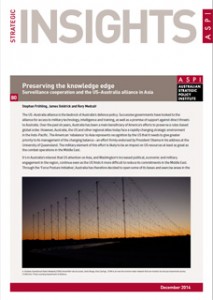Welcome back to another edition of the Member Round-Up. As always there is a wide variety of topics covered by CIMSEC members. There his, however, a distinct ‘air power’ flavour from our USAF members this week and I am sure that all of the featured articles will make for good reading leading into the weekend.
Dr Ioannis Chapsos recently joined CIMSEC and has a strong focus on researching maritime security issues. At The Conversation, he recently published an article concerning the United Kingdom’s new ‘Counter Terrorism and Security Bill.’ The danger, according to Chapsos, is that continuing to pay ransom money to pirates could lead to flow-on effects that the bill is trying to prevent. This should certainly be at the top of the weekly reading list for those interested in piracy and counter-terrorism issues.
Fellow CIMSECian, Chuck Hill, provides some brief thoughts from the recent US Naval Institute Defense Forum Washington 2014 seminar. His post, naturally, has a distinct focus on the Coast Guard elements of that session. You can also access Scott Cheney-Peters‘ points from the seminar here at CIMSEC.

From down under, James Goldrick co-authors a report for the Australian Strategic Policy Institute titled ‘Preserving the knowledge edge.’ Along with co-authors Stephan Fruhling and Rory Medcalf, thereport discusses the current state of surveillance cooperation between the United States and Australia. It also goes on to discuss the ways in which the existing relationship may evolve to meet the changing security situation in the Asia-Pacific. You can access a copy of the report here.
In the Air and Space Power Journal (Africa & Francophonie), Maj David Blair, USAF, provides his thoughts on some of the organisational challenges facing military professionals. In his essay, Blair provides lessons from historical examples of how organisational failures led to strategic defeat on the battlefield. Case studies range from the fall of the Roman Empire, to the developing of the F-16. Even though he does not provide the ‘answer’, his essay will certainly provide a basis for tackling the problem.
Over at The National Interest, Dave Mujumdar continues the air power theme with his own ’roundup’ of the US Air Force’s five most lethal weapons of war. For those who are not well versed in the capabilities of the world’s largest air force, it provides an up-to-date analysis of these platforms and some of the issues concerning some of the ageing aircraft.
Zachary Keck, provides two articles this week concerning foreign military technology and the global market. Firstly, he reports that a senior Chinese official boasted that China’s J-31 would easily rival the F-35. If one were a betting man, it would be safe to say that that was exactly what the J-31 was intended for (see picture). In any case, the Chinese aircraft would certainly be of interest to those air forces who are unable to afford the F-35. Keck’s second article reports that the Mexican government may be looking at purchasing Iranian-made drones in order to stave off drug cartel operations. Links to the articles can be found here and here, respectively.

In other news, the CIMSEC team wish to congratulate Major Jeremy Renken, USAF, for having his work recognised by the wider Air Force. Jeremy’s CIMSEC article, ‘Strategic Architectures’, was selected for inclusion in the Air War College’s Campaign Design and Execution Course. You can find a link to his article here.
As always we continue to look for works published by CIMSEC members. If you have published, or know of another member who has published recently, please email dmp@cimsec.org so that we can promote your work.

